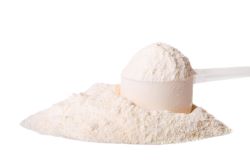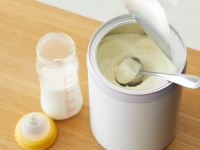
J. David Legan, PhD
Director of Science
David earned his Ph.D. in Food Technology from the University of Reading in the UK by modeling the ecology of mixed microbial populations, and then moved to Campden BRI in a variety of microbiological food safety research and client service roles. During that time, he was project lead for the Bacillus component of the UK’s pathogen modeling program. He moved again to Nabisco Research in New Jersey where he ran the corporate microbiology lab and developed a program of preservation technology development and microbial modeling. After the Kraft Foods acquisition, he moved to Chicago to work on Food Safety and Preservation research, and through modeling and validation studies:
- Optimized Oscar Mayer’s use of lactate and diacetate and their naturally cultured alternatives as Listeria-control agents in Ready to Eat meats
- Specified process conditions central to Oscar Mayer’s commercial launch of High Pressure Pasteurization of naturally cured RTE meats
David had responsibility for the Kraft cultures R&D group, developed a partnership to explore microwave sterilization leading to several patents, and led a program that developed an internal proprietary natural antimicrobial commercialized in several Kraft products. Technologies from his group supported approximately $4 billion in annual sales.
After years as a microbiology "client", he is now back in the "provider" role as Director of Science at Eurofins Microbiology Laboratories, Inc., by way of the Covance Food Solutions group based in Madison, WI, which he joined in 2016. In this role, he ensures appropriate method validation, explores new testing technologies, and fields multiple complicated food microbiology questions.
Products that his team has evaluated or developed and launched include:
- The 3M MDS platform in the Madison microbiology laboratory
- Flow cytometry for enumeration of probiotics
- Strain-level confirmation of probiotic identification using the polymerase chain reaction (PCR)
- Next-generation sequencing using the Oxford Nanopore Technologies GridION sequencing platform for microbial identification and microbiome analysis
Below are resources from David:
Join us for a focused session on Eurofins’ new Product Certification program—designed to set a higher standard for quality and transparency across the dietary supplement, food, and retail industries. Learn why certification matters, how the process works, and what makes Eurofins uniquely qualified to deliver a seal backed by nearly 100 years of testing expertise.
Discover how GLP-1 medications are reshaping consumer behavior and driving innovation in food, beverage, and supplement industries , ushering in the “smaller-appetite era” of nutrition and wellness.
Eurofins Food Chemistry Testing, Madison and Eurofins Assurance are pleased to announce the launch of Clean Sport Certified. This Product Certification programme is designed to safeguard the quality of dietary supplements, ingredients and food intended for athletes. Brands, retailers, and facilities in the dietary supplements industry can leverage this programme to demonstrate their commitment to regulatory compliance and quality. Click to learn more about this new certification.
Whole genome sequencing is no longer just a research tool. It’s a critical asset in food safety, outbreak response, and public health protection. Read our blog to learn more about whole genome sequencing and how it helps us better understand organisms like Salmonella and Cronobacter in food and infant formula.
Explore why technical diligence is critical in food & beverage M&A. Learn how Eurofins helps private equity firms assess scalability, supply chain stability, and innovation pipelines to reduce risk and drive growth.
The FDA and USDA are seeking public input to define ultra-processed foods (UPFs), aiming to shape future labeling, regulation, and consumer awareness. Learn how this RFI could impact food policy and public health.
With the overall market movement towards "better for you" foods, many companies have already started adding new or reformulated products to their portfolios. Click to read our blog about the market action being taken and strategies companies have deployed to appeal to the Make America Healthy Again movement.
Did you know the history of Eurofins Food Chemistry Testing, Inc. in Madison, Wisconsin dates back to 1929? Check out our infographic to learn more about the rich history of the laboratory.
Discover how Eurofins Product Development & Innovation helps private equity firms turn promising food & beverage startups into scalable, profitable brands through technical expertise, consumer insight, and product development rigor.
Have questions about the Eurofins ANSI 173 Finished Dietary Supplement and Ingredient Certification or Eurofins Protocol 101? Check out our guide for the answers to frequently asked questions regarding Eurofins Certification.












